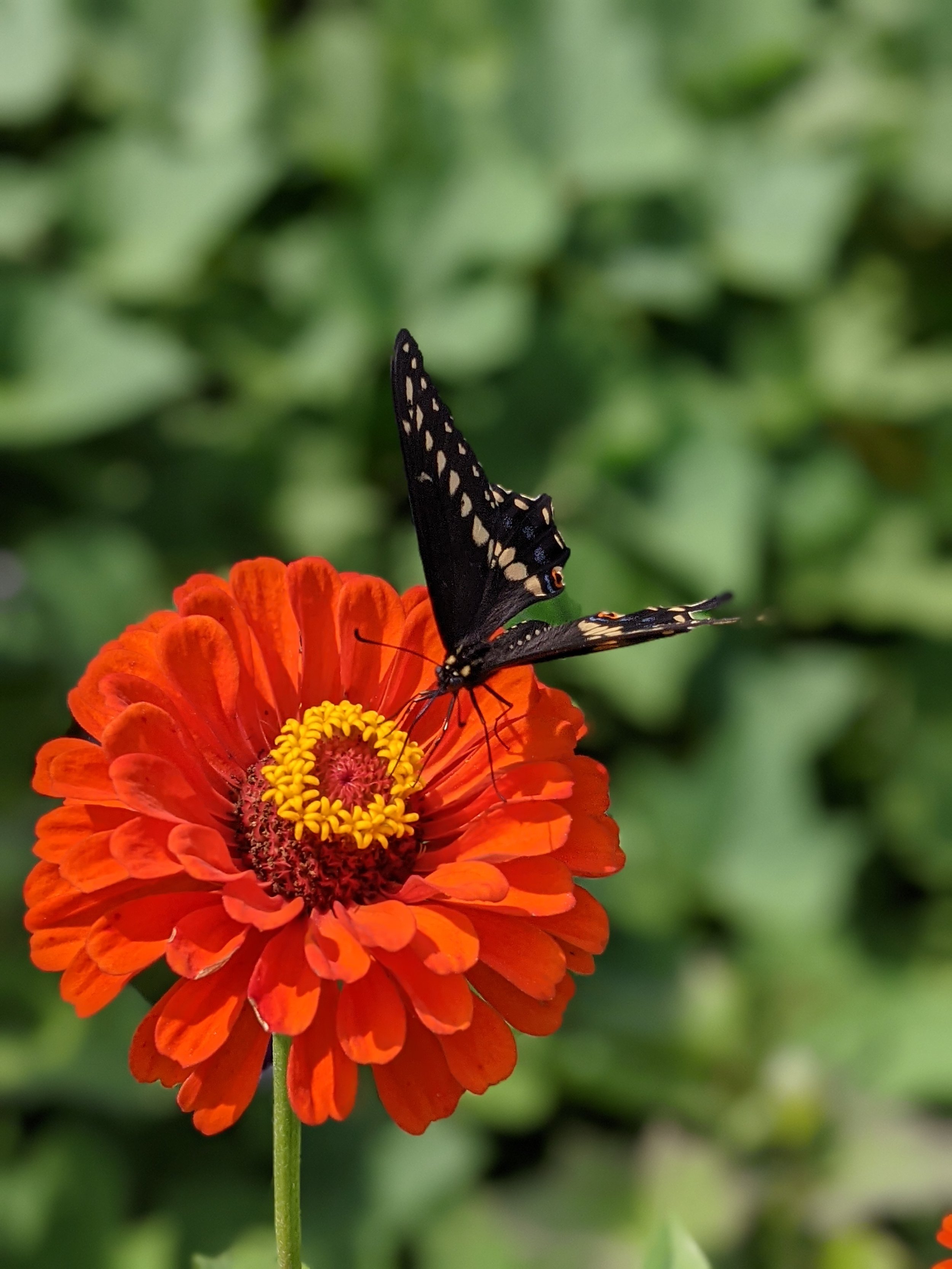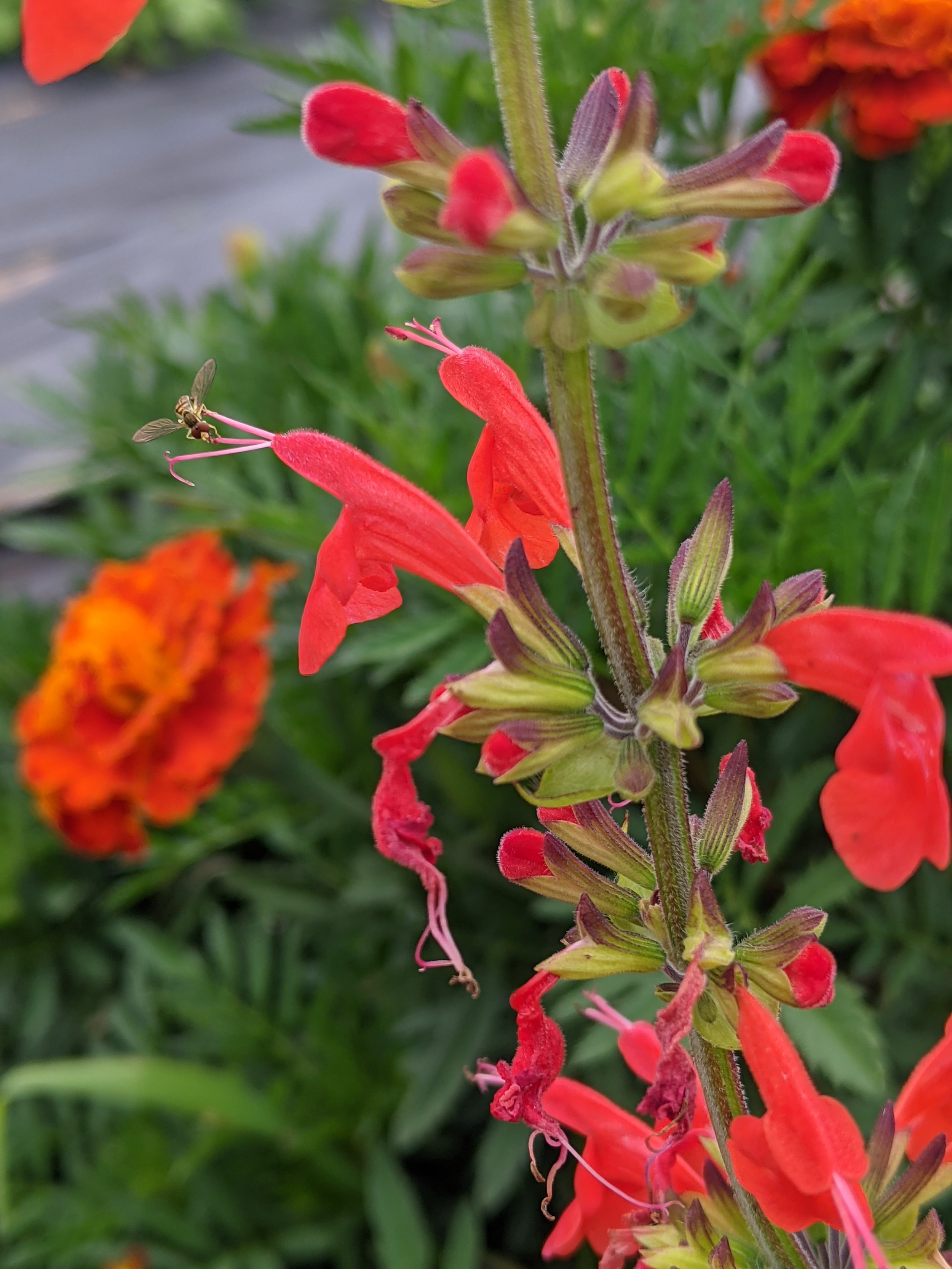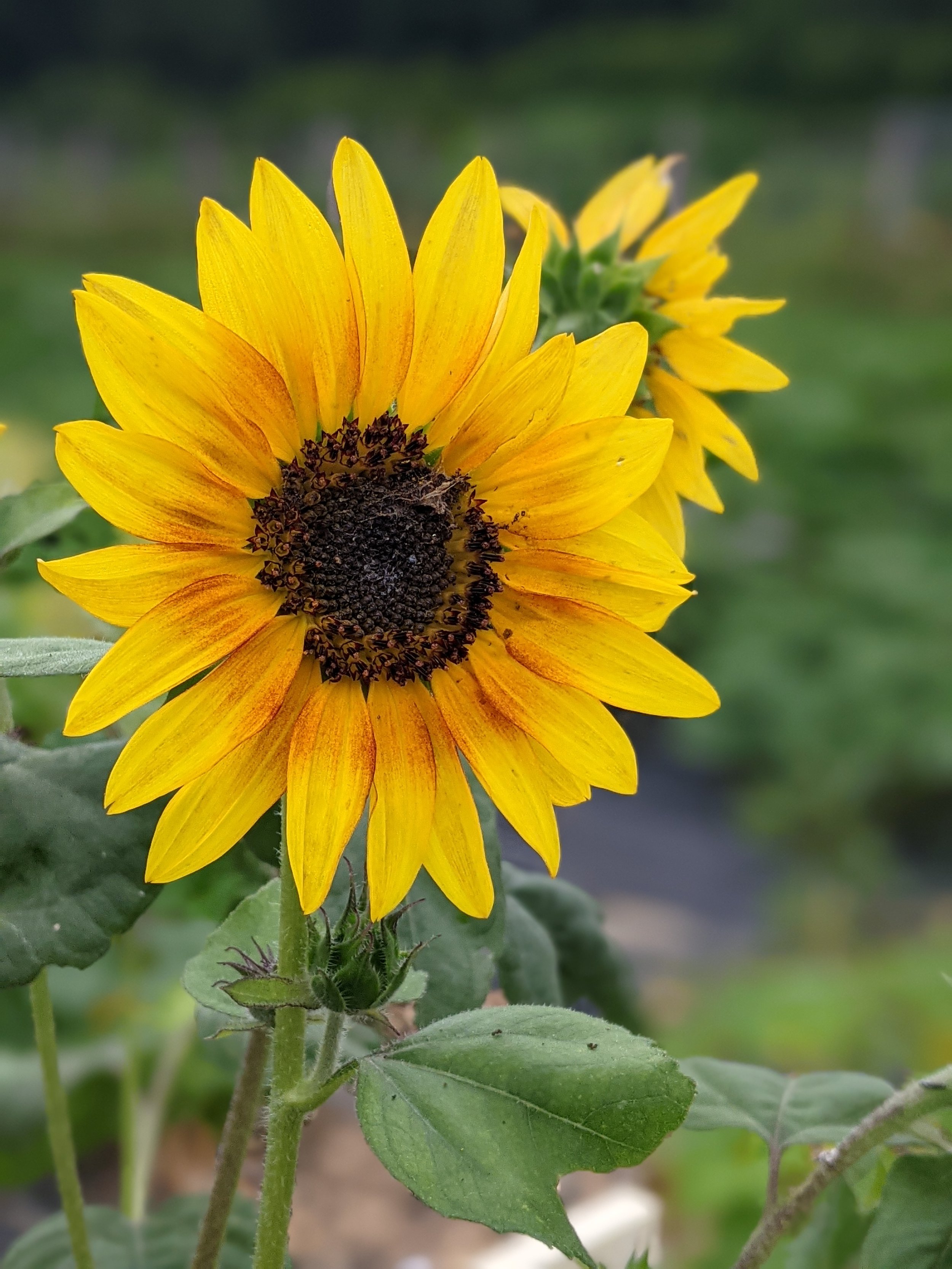DIY Pollinator Garden
A pollinator garden is a type of garden that is specifically designed to attract and support pollinators such as bees, butterflies, and hummingbirds. These pollinators are essential to the health and growth of many plants, as they help to transfer pollen from one plant to another, which is necessary for fertilization and seed production.
Above: Butterflies and bees land on a variety of pollinator flowers here at the Rows for the Hungry.
By: Jean Meyers
Almost every fruit, vegetable, and flower needs and owes its existence to bees and other pollinators. (Some plants can self pollinate or use the wind to pollinate.) They carry pollen from the male part of the plant to the female part of the plant, causing fertilization and the growth of the fruit or flower.
We are eager to save the bees. Costa Rica has even recently given them honorary citizenship. They are beautiful, interesting, magical and necessary to the production of fruits and vegetables. Wasps, not to be confused with nasty hornets and yellow jackets, also aid in pollination. They are non aggressive and wonderful architects. Look at those nests they build! They live peacefully and contribute mightily to the food supply and beauty of our planet.
Anyone can make a big impact by thoughtfully planting to attract pollinators. Planting a variety of hosts for pollinators is fun and helpful. Swallowtail butterflies love the Spice Bush. Monarch butterflies love the Milkweed plant. Native plants will attract a wonderful variety of birds, bees, and other pollinators endangered by the increasing loss of habitat.
We are becoming more aware of the danger of pesticides. They kill the pollinators, birds, butterflies, and wild life. Please heed caution when choosing pesticides and always read the label and application instructions carefully. Doug Talamy says it best: “Insects are not optional. It is not okay if they disappear. Insects are the primary drivers of our ecosystems. If they go, we go.”
The first step in creating a pollinator garden is to choose the right location. Pollinators need plenty of sun and access to water, so a spot that gets at least six hours of sun per day and has a nearby water source, such as a birdbath, is ideal.
Next, choose a variety of plants that will attract and support pollinators. Some good options include wildflowers, herbs, and native plants that are known to be popular with pollinators in your area. Flowers that are particularly attractive to pollinators include daisies, sunflowers, and asters. Herbs like mint, thyme, and basil are also great choices. It's also a good idea to include a variety of plants that bloom at different times of the year, so that pollinators have a constant food source.
Once you have chosen your plants, it's time to prepare the soil. Pollinators need healthy soil to thrive, so make sure to amend the soil with compost or other organic matter before planting. After planting, be sure to water your garden regularly and keep an eye out for pests that might harm your pollinators.
The benefits of a pollinator garden are many. Not only do pollinator gardens provide a beautiful and peaceful retreat for you to enjoy, but they also play a vital role in the ecosystem by supporting the growth of plants and other wildlife. Pollinator gardens help to maintain the biodiversity of plant and animal life, which is essential for the health of our planet. Furthermore, a pollinator garden can also help to increase the yield of nearby crops and gardens, which can have a positive impact on food security.
A pollinator garden is a simple and rewarding way to support the health and growth of plants and other wildlife!




